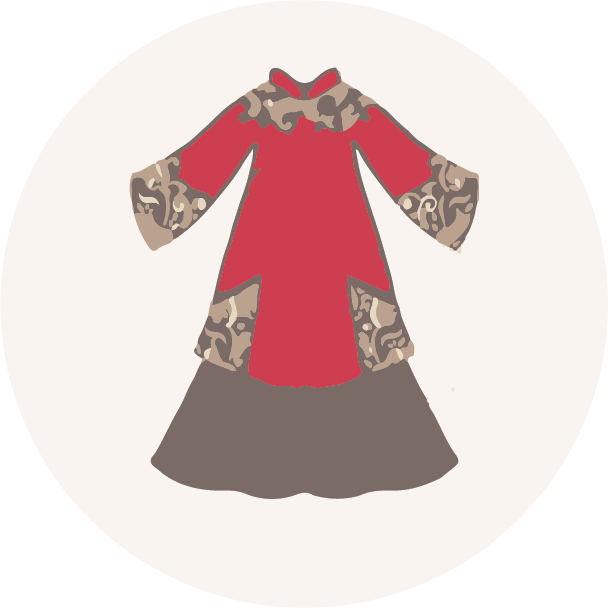






Wei and Jin Dynasties (220–589 CE):
Lightweight, layered garments with natural, ethereal aesthetics reflected a pursuit of freedom and scholarly elegance.
Lightweight, layered garments with natural, ethereal aesthetics reflected a pursuit of freedom and scholarly elegance.
Tang Dynasty (618–907 CE):
Vibrant, colorful dresses with wide sleeves and high-waisted skirts symbolized cultural openness and prosperity.
Vibrant, colorful dresses with wide sleeves and high-waisted skirts symbolized cultural openness and prosperity.
Song Dynasty (960–1279 CE):
Hanfu favored more subdued tones, narrower sleeves, and refined, modest designs reflecting neo-Confucian influences.
Hanfu favored more subdued tones, narrower sleeves, and refined, modest designs reflecting neo-Confucian influences.
Yuan Dynasty (1271–1368 CE):
Integrating Mongolian influences, Hanfu adapted with high collars and fitted designs while maintaining traditional elements.
Integrating Mongolian influences, Hanfu adapted with high collars and fitted designs while maintaining traditional elements.
Ming Dynasty (1368–1644 CE):
Ming Hanfu revived classical styles with structured layers, bold collars, and ornate embroidery emphasizing imperial authority.
Ming Hanfu revived classical styles with structured layers, bold collars, and ornate embroidery emphasizing imperial authority.
Qing Dynasty (1644–1912 CE):
Hanfu declined under Manchu rule, with robes like qipao and magua merging traditional Han and Manchu styles.
Hanfu declined under Manchu rule, with robes like qipao and magua merging traditional Han and Manchu styles.
Modern Era (21st Century):
Modern Hanfu blends traditional aesthetics with contemporary practicality, reviving ancient designs for cultural expression and everyday wear.
Modern Hanfu blends traditional aesthetics with contemporary practicality, reviving ancient designs for cultural expression and everyday wear.